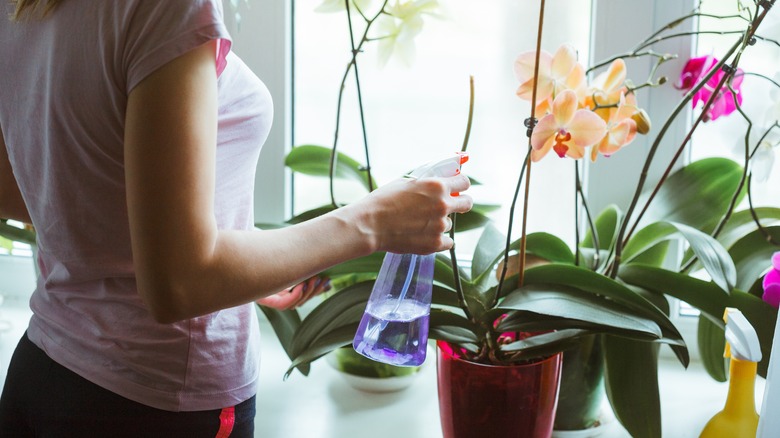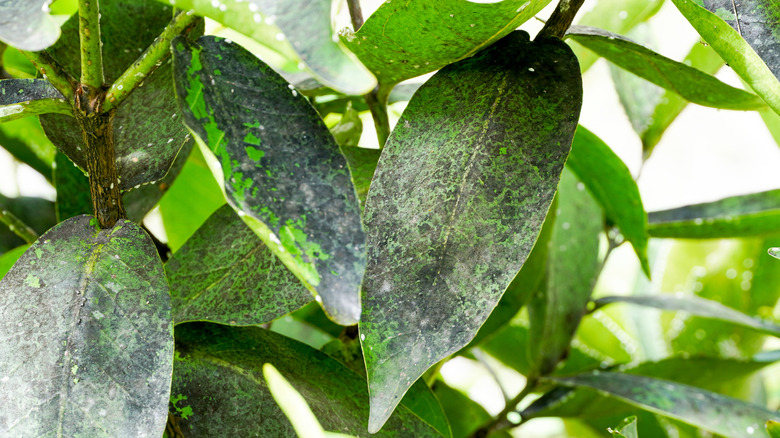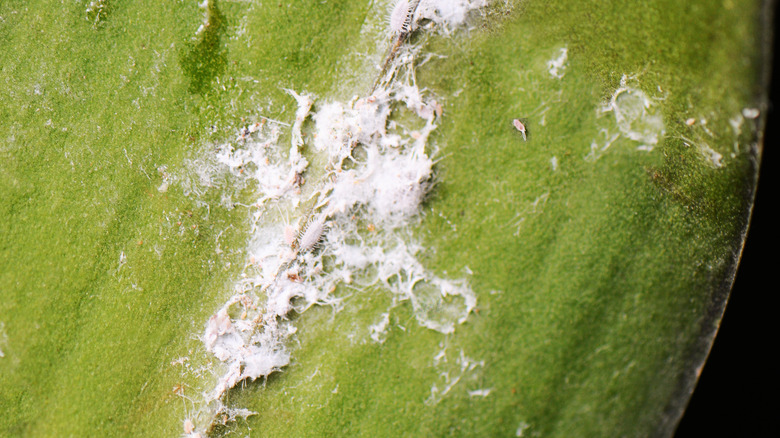How To Treat Unwanted Black Mold On Your Orchid
Have you noticed black patchy marks on the leaves of your orchid that look a bit like splatters of soot? If so, you're probably worried about what damage it could be doing to your plant. This is a type of black mold, also known as "sooty mold," which is an ascomycete fungi that targets orchids and other plants that thrive in damp and humid environments. The good news is that this is generally a cosmetic issue, making your pretty orchids look unattractive and unhealthy, but it won't necessarily kill your orchid.
However, because it covers the surface of the leaves, the black mold can lead to other problems, like making it difficult for the plant to photosynthesize, so you'll still want to treat your plant. This is especially important if your orchid is suffering from a pest infestation at the same time as the mold. The pest infestation could indeed be the underlying problem causing your plant to suffer. Luckily, black mold is easy to treat by simply washing it off, which safely removes it from your plant.
How to treat orchids that have black mold spots on the leaves
The first thing you should do is closely inspect your orchid for signs of a pest infestation. Some signs that you could look for include webbing from spider mites, silvery trails that slugs leave, or signs of pests feeding on the plant — like small holes or brown and discolored areas on the leaves. As for the pests themselves, mealy bugs can often look like small clusters of cotton wool, and you may see a bigger infestation of thrips if you look closely at the surface of the leaf and find black or white specks that are slowly moving about. If your plant has pests then you will have to remove them by rinsing the plant thoroughly and then treat the plant with an insecticide before you deal with the mold issue.
If there are no pests, then you can get straight to cleaning off the black mold. All you will need is a soft cloth to rub down all of the leaves on the plant gently and prevent abrasions or damage. Make sure to do both the front and the back. To do this, use a simple and mild liquid solution made with a tablespoon of ordinary dish soap to a gallon of water, making sure that it is lukewarm so as not to shock the plant with too hot or cold a temperature. You could use an insecticidal soap instead if you're worried about pests too. After cleaning, maintenance includes keeping the orchid in a place where there is plenty of ventilation and good airflow, as this will stop the mold from returning.
Why is it important to treat black mold on orchids?
The black mold itself isn't harmful to your orchid, but it can end up causing a problem if left to get out of hand. If you leave the mold to grow for too long and it spreads across the surfaces of your orchid from leaf to leaf, the plant is going to have trouble photosynthesizing. Photosynthesis in orchids is how they obtain carbon. The seeds they produce need this, along with other nutrients they get from mycorrhizal fungi, which is a beneficial fungi, for germination. The process is called "initial mycoheterotrophy," and it's how the plant gets its nutrition. The leaves need to be clean and healthy in order to perform optimally, but if they are covered in black mold, the fungus blocks the sunlight. Sometimes this can also stunt growth or result in yellow leaves.
If you have found that your orchid also has a pest problem, this could be exacerbating the black mold issue. This is because sap-sucking insects, like aphids for example, secrete honeydew, which is sticky and helps the black mold grip and grow on the orchid leaves.


